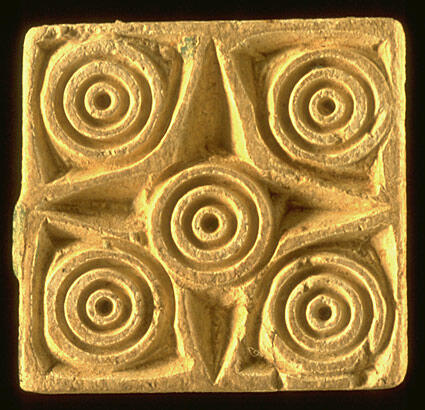Above: Kot Diji phase steatite button seal from Harappa
Abstract
Hypotheses of a Mesopotamian origin for the Vedic and Chinese star calendars are unfounded. The Yangshao culture burials discovered at Puyang in 1987 suggest that the beginnings of Chinese astronomy go back to the late fourth millennium. The instructive similarities between the Chinese and Indian luni-solar calendrical astronomy and cosmology therefore with great likelihood result from convergent parallel development and not from diffusion.
Introduction
In what follows, I propose that the first Indian stellar calendar, perhaps restricted to the quadrant stars, was created by Early Harappans around 3000 BCE, and that the heliacal rise of Aldebaran at vernal equinox marked the new year. The grid-pattern town of Rahman Dheri was oriented to the cardinal directions, defined by observing the place of the sunrise at the horizon throughout the year, and by geometrical means, as evidenced by the motif of intersecting circles. Early Harappan seals and painted pottery suggest that the sun and the centre of the four directions symbolized royal power.
Note: The early steatite seal above plays an illustrative role in the author's thesis.

